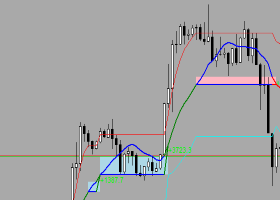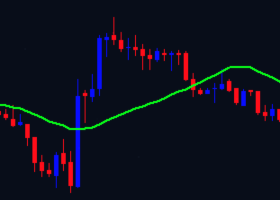
0
540
Spot Forex
“Spot Forex” means that you are just trading one currency for another, and back again when you take the profit or loss. There is nothing complicated about this. The term “spot” originally signified that it was for actual next day delivery.
This is the traditional instrument that retail Forex trading began with. When you see currency exchange rates quoted at banks or on the news, it is the spot prices that are being referred to.
Spot Forex is usually relatively cheap to trade, regarding spreads and commissions.
Futures
A “future” is something you buy or sell for delivery at a future date. It can also be a currency pair. For example going long spot EUR/USD is like buying Euros with U.S. Dollars right now. On the other hand, going long a EUR/USD future for delivery at the end of next month, is like committing to buying Euros with U.S. Dollars at the end of next month. Note that there is no actual delivery involved in your broker’s transaction, but that all futures have a theoretical delivery date. So we can see that the price of a EUR/USD future might be different to spot EUR/USD, depending upon what the market expects to happen between now and the future’s delivery date.
Futures are usually more expensive to trade than spot, unless you are planning a very long-term trade. This is because while the spreads and commissions are usually higher, there are no overnight financing charges – which are usually payable on spot Forex. They also tend to be less liquid than spot Forex, which means that price movements might be more jerky and volatile.
CFDs
A CFD is a “Contract for Difference” based upon an underlying asset. When you buy or sell it, you make a contract with your broker that X amount of money will pass between you based upon a movement in the price per unit for or against your chosen direction. For example, suppose that you want to go long in shares of Apple Inc. You would buy a CFD based upon the price of Apple Inc., and when you closed that trade, the difference in the price of the share from your trade’s open to close would be the basis of your gain or loss. The purpose of the CFD is to prevent you from having to go to the trouble of buying or selling in actual shares, which can be quite large in value, plus the associated charges and taxes involved in actual sale or purchase.
ETFs
An “ETF” is an “Exchange Traded Fund”. This is simply a fund that can be bought and sold publicly in share units, like a mutual fund, but which is based on an asset or baskets of assets, for the sake of convenience. It is probably simplest to think of it as a type of mutual fund. For example, if you want to invest in Gold Mining Shares, you could buy a share in a Gold Mining ETF that tracks the market capitalization weightings of all shares in Gold Mining companies quoted on a particular exchange. It is a way to be exposed to an asset or some kind of index representing a type of asset without all the cost and trouble of actually having to buy it all directly.
“Spot Forex” means that you are just trading one currency for another, and back again when you take the profit or loss. There is nothing complicated about this. The term “spot” originally signified that it was for actual next day delivery.
This is the traditional instrument that retail Forex trading began with. When you see currency exchange rates quoted at banks or on the news, it is the spot prices that are being referred to.
Spot Forex is usually relatively cheap to trade, regarding spreads and commissions.
Futures
A “future” is something you buy or sell for delivery at a future date. It can also be a currency pair. For example going long spot EUR/USD is like buying Euros with U.S. Dollars right now. On the other hand, going long a EUR/USD future for delivery at the end of next month, is like committing to buying Euros with U.S. Dollars at the end of next month. Note that there is no actual delivery involved in your broker’s transaction, but that all futures have a theoretical delivery date. So we can see that the price of a EUR/USD future might be different to spot EUR/USD, depending upon what the market expects to happen between now and the future’s delivery date.
Futures are usually more expensive to trade than spot, unless you are planning a very long-term trade. This is because while the spreads and commissions are usually higher, there are no overnight financing charges – which are usually payable on spot Forex. They also tend to be less liquid than spot Forex, which means that price movements might be more jerky and volatile.
CFDs
A CFD is a “Contract for Difference” based upon an underlying asset. When you buy or sell it, you make a contract with your broker that X amount of money will pass between you based upon a movement in the price per unit for or against your chosen direction. For example, suppose that you want to go long in shares of Apple Inc. You would buy a CFD based upon the price of Apple Inc., and when you closed that trade, the difference in the price of the share from your trade’s open to close would be the basis of your gain or loss. The purpose of the CFD is to prevent you from having to go to the trouble of buying or selling in actual shares, which can be quite large in value, plus the associated charges and taxes involved in actual sale or purchase.
ETFs
An “ETF” is an “Exchange Traded Fund”. This is simply a fund that can be bought and sold publicly in share units, like a mutual fund, but which is based on an asset or baskets of assets, for the sake of convenience. It is probably simplest to think of it as a type of mutual fund. For example, if you want to invest in Gold Mining Shares, you could buy a share in a Gold Mining ETF that tracks the market capitalization weightings of all shares in Gold Mining companies quoted on a particular exchange. It is a way to be exposed to an asset or some kind of index representing a type of asset without all the cost and trouble of actually having to buy it all directly.


